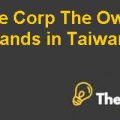
Bio Tech Inc.
Q1.) What is Bio-Tech's strategy? How do the various divisions relate to the firm's overall strategy?
Bio-Tech's Strategy
Just after the initial public offering in the year the year 1960, Bio Tech Inc. decided to define clear set of responsibilities for each individual business unit so that their performance can be managed and evaluated with respect to their market and distribution channels. In order to implement this plan, Bio Tech Inc. formulated a corporate level strategy to segregate the business operations into three individual operating divisions so that the performance of these divisions can be evaluated.
Divisions Relativity to the Strategy
However, entire divisions are not being evaluated as per the devised strategy regarding the evaluation of divisions because the strategy states that each departments’ responsibility should be defined and evaluated in accordance with their respective market that they are serving, meanwhile, the consumer product division is being held responsible for the research and development cost. However, in reality as per the statement of consumer product group, the manager of his group only uses and sells the byproducts that are the developed in the course of research and development work done for the other two divisions and holding consumer product division responsible for the research and development cost is not an act in accordance with the strategy devised for the divisional responsibilities.
Q2.) Compute Bio-Tech's weighted average cost of capital.
Weighted Average Cost of Capital (WACC) is a combination of cost of equity and cost of debt and in order to calculate the combined cost of capital, these costs of capital are combined together in proportion to the capital invested as per the capital structure of the overall business entity. However, the cost of equity represents the returns required by the shareholders and we have different approaches for the calculation of cost of equity; the first one is dividend valuation model and the second one is capital asset pricing model. Capital asset pricing model uses the risk free returns on treasury bill and average market premium on equity investment. In addition to this, the beta values are used for the calculation of cost of equity capital, which represents the systematic risk of the industry, however, data provided in the case is insufficient for the calculation of cost of capital through capital asset pricing model, therefore, the cost of equity of Bio Tech Inc. has been calculated using the dividend valuation model. Dividend valuation model uses the current year’s dividend, current price of equity shares and the growth in dividend; therefore, the cost of equity has been calculated using the dividend valuation as 17.75%. Meanwhile, the cost of debt has been calculated using the interest expenses for the year 1974 and existing debt of $45 million that is 6%, however, for the calculation of weighted average cost of capital, interest rate has been calculated after tax. Finally, the calculation of WACC requires equity and debt value, therefore, value of equity has been calculated using the average share price of $49 per share (high $57 and low $41) and total outstanding share of 8,493 million, meanwhile, the value of debt has been taken from the balance sheet as at year ended December 1974. Therefore, based on the valuation above, weighted average cost of capital has been calculated as 16.33% (Appendix A).
Q3.) Should the LPG division spend $10 million on equipment in 1975 or postpone some of the expenditure to 1978?
The LPG division produces and sells the laboratory products and the market for this type of product is very volatile because of the changing technology that is used in the production of these medical products. However, since this division has been generating profits as per the last four years records, meanwhile, the division is operating in a growing market and LPG division is unable to meet the growing demand for laboratory products, hence, the management has decided to expand the production capacity in order to increase the market share and revenues from the laboratory market. Meanwhile, the management is concerned about the rapidly changing technology that is used in the production of laboratory products that want to evaluate the investment in LPG division in order to make sure that the investment creates positive results for the division and gets the maximum benefit of developing as well as investing in the production of laboratory products. Therefore, the management should invest its first round financing the LPG division with acquisition of land and investment in machinery and equipment that will generate enough capacity to meet next two year’s demand and the remaining investment for the purchase of equipment and machinery would be done after the second year. Investment in equipment in this way will minimize the risk of losses may result from the rapidly technology in laboratory product markets, which will make the equipments useful life shorter not because of the physical wear and tear of equipment but because of the fact that the technology would ..................
This is just a sample partial case solution. Please place the order on the website to order your own originally done case solution.
The financial vice-president, is expected to finalize a financing plan Bio-Tech corresponding to the latest long-term plans for the operation of three groups. The latter, however, must be adapted to the recommendations that will be made at the factory investment one product group and the possible sale of division. "Hide
by Lawrence E. Thompson, David W. Mullins Jr. Source: Harvard Business School 15 pages. Publication Date: 01 May 1975. Prod. #: 275124-PDF-ENG













